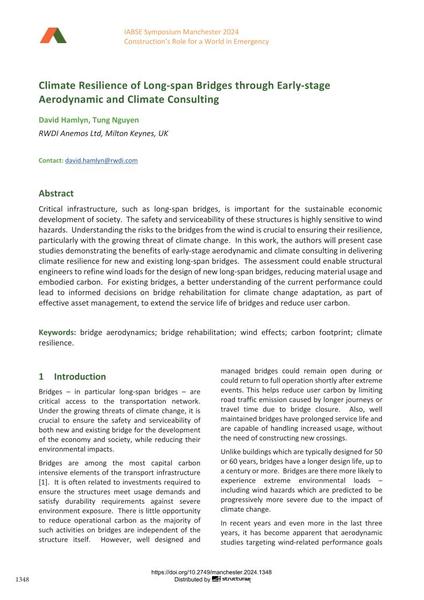Climate Resilience of Long-span Bridges through Early-stage Aerodynamic and Climate Consulting

|
|
|||||||||||
Détails bibliographiques
| Auteur(s): |
David Hamlyn
(RWDI Anemos Ltd, Milton Keynes, UK)
Tung Nguyen (RWDI Anemos Ltd, Milton Keynes, UK) |
||||
|---|---|---|---|---|---|
| Médium: | papier de conférence | ||||
| Langue(s): | anglais | ||||
| Conférence: | IABSE Symposium: Construction’s Role for a World in Emergency, Manchester, United Kingdom, 10-14 April 2024 | ||||
| Publié dans: | IABSE Symposium Manchester 2024 | ||||
|
|||||
| Page(s): | 1348-1357 | ||||
| Nombre total de pages (du PDF): | 10 | ||||
| DOI: | 10.2749/manchester.2024.1348 | ||||
| Abstrait: |
Critical infrastructure, such as long-span bridges, is important for the sustainable economic development of society. The safety and serviceability of these structures is highly sensitive to wind hazards. Understanding the risks to the bridges from the wind is crucial to ensuring their resilience, particularly with the growing threat of climate change. In this work, the authors will present case studies demonstrating the benefits of early-stage aerodynamic and climate consulting in delivering climate resilience for new and existing long-span bridges. The assessment could enable structural engineers to refine wind loads for the design of new long-span bridges, reducing material usage and embodied carbon. For existing bridges, a better understanding of the current performance could lead to informed decisions on bridge rehabilitation for climate change adaptation, as part of effective asset management, to extend the service life of bridges and reduce user carbon. |
||||
